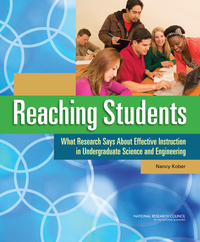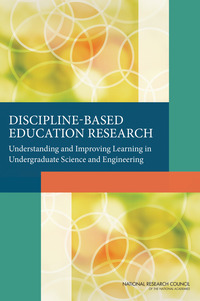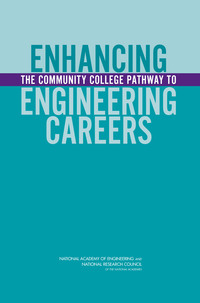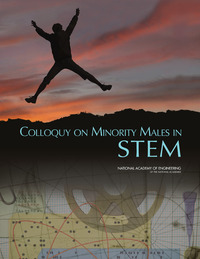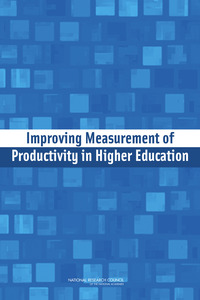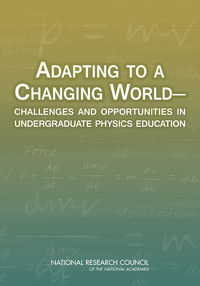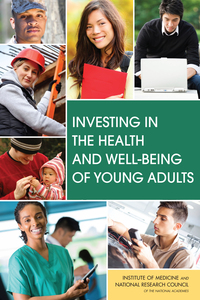21st century careers require highly skilled workers with strong technical knowledge as well as the ability to solve problems, think creatively, work collaboratively and function as lifelong learners. Recent National Academies studies dive into some of today’s most urgent higher education issues. We asked the Study Directors of each of the publications featured below to highlight actionable recommendations for universities and other stakeholders.
“The number of bachelor’s degrees awarded nationally in computer and information science and support services has surged in recent years, increasing by 74 percent between 2009 and 2015, compared to a 16 percent increase in bachelor’s degrees overall. At the same time, interest in computer science courses among majors and non-majors alike has also grown, reflecting the increasing importance of CS skills across disciplines and occupational fields, and in daily life. This report explores the drivers of and potential strategies for responding to this increased demand, noting that there is no one-size-fits-all solution. Academic institutions should respond with urgency to the current demand while planning for the future role of CS institution-wide, taking deliberate actions to support diversity in their programs.” — Emily Grumbling, Study Officer
Assessing and Responding to the Growth of Computer Science Undergraduate Enrollments
The field of computer science (CS) is currently experiencing a surge in undergraduate degree production and course enrollments, which is straining program resources at many institutions and causing concern among faculty and administrators about how best to respond to the rapidly growing demand. …
“The U.S. system of graduate education for science, technology, engineering, and mathematics (STEM) has long served as an international gold standard by preparing researchers to advance the frontiers of discovery. Given major global challenges such as the rapid innovations in the conduct of research, the role of STEM in the workforce and the economy, and the increasingly diverse backgrounds of students seeking advances degrees, how prepared is the system of graduate education to respond to these changes? The report Graduate STEM Education for the 21st Century calls for cultural change in academic research, which requires adjusting the incentive systems driven in large part by federal and state funding agencies. The incentives often lack alignment with the ideal, student-centric vision of graduate education called for by the committee, which includes support for diverse, equitable, and inclusive learning environments; a system that provides training for mentors and advisors; time and resources for broad career exploration; and increased mental health services. The committee addressed these critical issues, as well as drawing attention to the need for increased data collection in and research on graduate STEM education programs, and provided a series of recommendations to ensure that all stakeholders in the system understand their role in driving change.” — Layne Scherer, Study Officer
Graduate STEM Education for the 21st Century
The U.S. system of graduate education in science, technology, engineering, and mathematics (STEM) has served the nation and its science and engineering enterprise extremely well. Over the course of their education, graduate students become involved in advancing the frontiers of discovery, as …
“The ‘Branches from the Same Tree’ study explored the impact on students of educational approaches that integrate the humanities and arts with science, engineering, and medicine in higher education. The title of the study is based on a quote from Albert Einstein in which he describes the unity of human knowledge, stating ‘all religions, arts, and sciences are branches from the same tree.’ The study committee found that integrative educational approaches are associated with positive student learning outcomes, including increased critical thinking abilities, higher-order thinking and deeper learning, content mastery, problem solving, teamwork and communication skills, improved visuospatial reasoning, and general engagement and enjoyment of learning. The committee found an incredible groundswell of enthusiasm for integrative educational approaches and catalogued over 200 interdisciplinary, transdisciplinary, and multidisciplinary programs and courses at a diverse array of colleges and universities.” — Ashley Bear, Study Officer
In the United States, broad study in an array of different disciplines —arts, humanities, science, mathematics, engineering— as well as an in-depth study within a special area of interest, have been defining characteristics of a higher education. But over time, in-depth study in a major …
“There is a growing concern that the biomedical research enterprise, for all of its many strengths, is beset by several core challenges that undercut its vitality, promise, and productivity and that could diminish its critical role in the nation’s health and innovation in the biomedical industry. This is not a new problem – in fact, reports addressing vulnerabilities in the biomedical research workforce have been issued over the last two decades. The committee for the Next Generation Researchers Initiative investigated conclusions from these earlier reports and identified several impediments to progress over the years. A key impediment has been an absence of shared responsibility for the biomedical research system. Many stakeholders in the system tend to hold the federal government responsible for this system, placing blame for failures at the feet of NIH, the principal funder of biomedical research. Doing so, however, obscures the important role that other organizations, particularly universities, must play in developing and implementing solutions. The committee therefore offered several recommendations specifically for universities, as well as a mechanism for shared oversight of the system.” — Lida Beninson, Study Officer
The Next Generation of Biomedical and Behavioral Sciences Researchers: Breaking Through
Since the end of the Second World War, the United States has developed the world’s preeminent system for biomedical research, one that has given rise to revolutionary medical advances as well as a dynamic and innovative business sector generating high-quality jobs and powering economic output …
“More than 50% of female faculty and staff in higher education and between 20-50% of female students have experienced sexual harassment. Even when the sexual harassment consists of sexist insults or crude behavior, without any unwanted sexual attention or sexual coercion, it can undermine women’s professional and educational attainment and mental and physical health. To stop the pattern of harassing behavior from impacting the next generation of women, a change to the culture and climate in colleges and universities is needed. This report reviews the research on sexual harassment in academia and details how system-wide changes in higher education can be implemented to prevent and address sexual harassment in education and research settings.” — Frazier Benya, Study Officer
Over the last few decades, research, activity, and funding has been devoted to improving the recruitment, retention, and advancement of women in the fields of science, engineering, and medicine. In recent years the diversity of those participating in these fields, particularly the participation …







